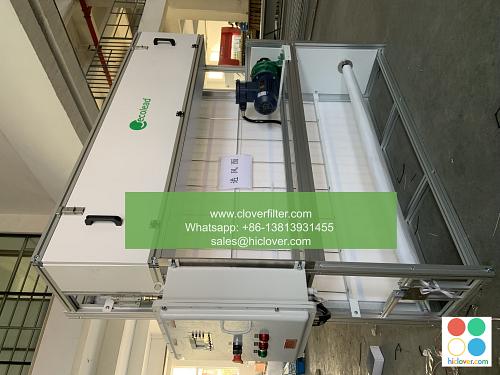How to Conduct a Successful Air Filter Testing Program

Conducting a successful air filter testing program is crucial for ensuring the quality of indoor air and maintaining the efficiency of Heating, Ventilation, and Air Conditioning (HVAC) systems. A well-planned testing program helps identify the effectiveness of air filters in removing airborne contaminants, such as particulate matter (PM), volatile organic compounds (VOCs), and microorganisms. In this article, we will discuss the key steps to conduct a successful air filter testing program, highlighting various application areas, including commercial buildings, industrial facilities, and healthcare settings.
Pre-Testing Planning and Preparation
Before initiating the testing program, it is essential to define the testing objectives and identify the key performance indicators (KPIs). This includes determining the types of air filters to be tested, such as HEPA filters, activated carbon filters, or pre-filters. Additionally, it is crucial to select the appropriate testing methods, such as scan testing, challenge testing, or in-situ testing, depending on the specific application area. For instance, in healthcare settings, it is critical to use challenge testing to evaluate the filter’s ability to capture biological contaminants.
Testing Methods and Protocols
Various testing methods can be employed to evaluate the performance of air filters, including:
* Aerosol challenge testing: This method involves introducing a controlled amount of aerosol particles into the air stream to evaluate the filter’s capture efficiency.
* Scan testing: This method involves scanning the filter to detect leaks or defects that can compromise its performance.
* In-situ testing: This method involves testing the filter in its actual operating environment to evaluate its performance under real-world conditions.
Data Analysis and Interpretation
After completing the testing program, it is essential to analyze and interpret the data to determine the filter’s performance. This includes evaluating the filter’s capture efficiency, pressure drop, and overall system performance. The data can be used to identify areas for improvement and optimize the air filter selection for specific application areas. For example, in industrial facilities, it is crucial to optimize the air filter selection to minimize energy consumption and maintenance costs.
Application Areas and Industry-Specific Considerations
The testing program should be tailored to the specific application area, taking into account industry-specific considerations, such as:
* Commercial buildings: Focus on indoor air quality (IAQ) and energy efficiency.
* Industrial facilities: Emphasize process control and equipment protection.
* Healthcare settings: Prioritize infection control and patient safety.
Conclusion and Recommendations
Conducting a successful air filter testing program requires careful planning, execution, and analysis. By following the guidelines outlined in this article, facilities can ensure the effectiveness of their air filters and maintain a healthy indoor environment. It is essential to regularly review and update the testing program to reflect changes in industry standards, regulations, and technological advancements. Additionally, facilities should consider collaborating with air filter manufacturers and industry experts to stay informed about the latest best practices and innovations in air filter testing and selection. It seems like you forgot to include the actual prompt. Could you please provide more details or specify what you would like to talk about? I’m here to help with any questions or topics you’re interested in discussing!

